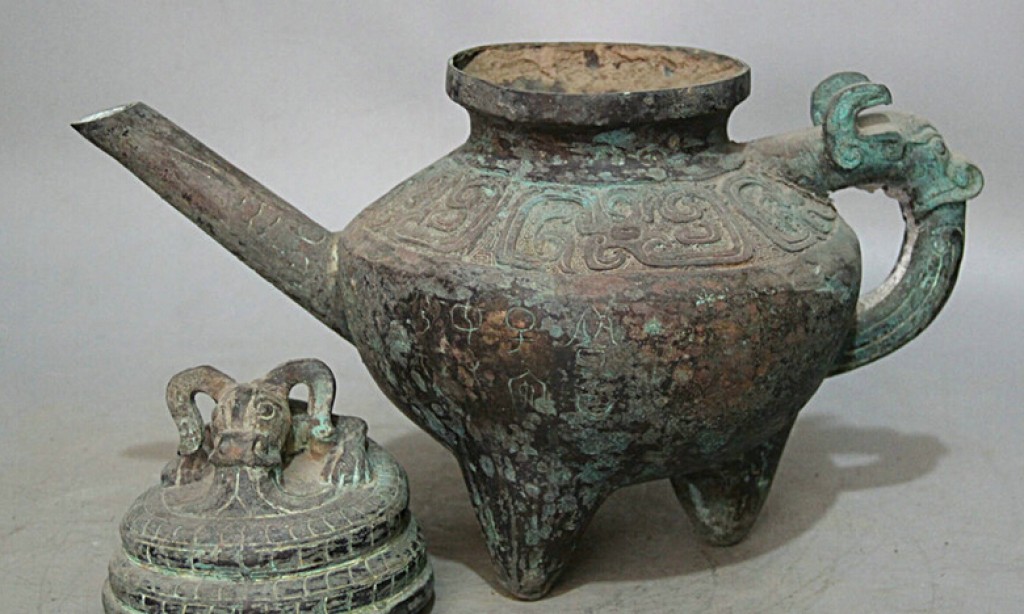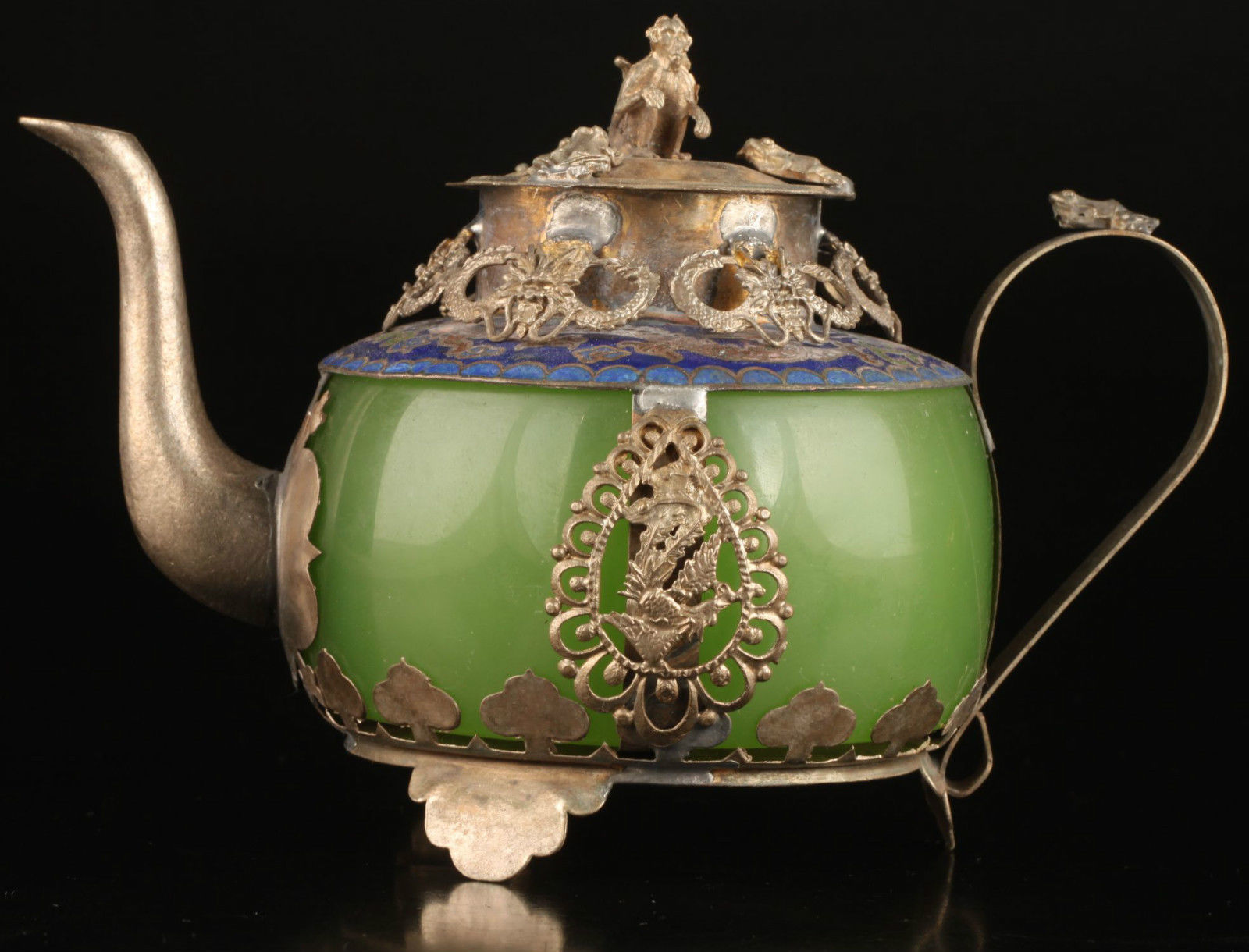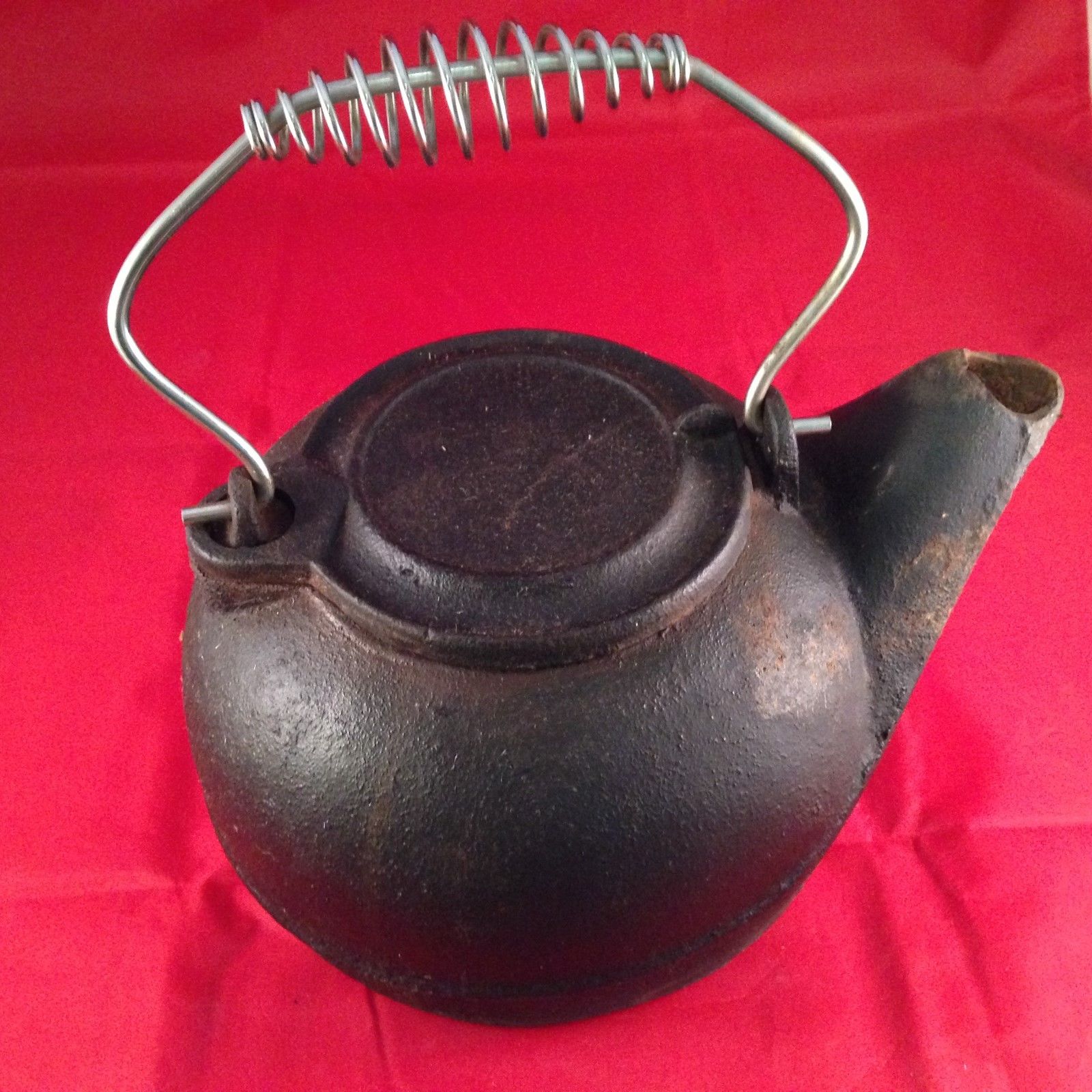Kettles or teakettles with artistic designs are passed on from generation to generation and have great value. They are made out of tough materials such as copper, stainless, chromed, enameled steel or cast iron. Some of the most common teakettles of the 19th century were made out of copper or cast iron. They were designed to last.
A typical copper teakettle from this period is usually tinned from the inside having a gooseneck spout, a brass lid, and a hinged handle.
By the beginning of the 20th century, cast aluminum are being used to make teakettles. Some of the most collectible examples are those made by Wagner Manufacturing Company of Ohio and Griswold Manufacturing Company of Pennsylvania.
Squat Wagner kettles have straight sides that tapered gently from bottom to top, wood handles on thick wire, and a slightly domed lid that swiveled from front to back. Griswold kettles are a bit more sophisticated, with faceted, flattened sides, a flat swivel lid, a nicer handle, and a “Safety Fill” hole between the lid and spout.
Enameled metal kettles ranged from ones with blue-and-white mottled exteriors to others in solids of red or blue. Lighter than cast iron and copper, enameled metal teakettles are frequently packed on camping trips and used until their cracked surfaces succumbed to rust. Other metal kettles include those by Wagner, whose Magnalite kettles from the 1940s had polished aluminum surfaces and black, Bakelite handles.
In the 1920s and ’30s, electric teakettles gained acceptance. Some manufacturers that had excelled in copper and cast iron tried to move into this new market, as did firms like General Electric, but the company that became synonymous with electric teakettles was Russell Hobbs, which introduced its K1 electric kettle to English tea drinkers in 1955.
More recently, a new class of designer teakettles, most of which are of the whistling variety, have gained prominence. In 1983, the Italian kitchenware company Alessi commissioned German designer Richard Sapper to create a two-tone whistle, stainless steel domed teakettle.
Two years later, in 1985, post-modern architect Michael Graves produced an even more famous design, the Alessi bird kettle, which today is sold in regular, electric, and cordless versions.
Bodum of Denmark has also employed designers to do amazing things with its teakettles. The company’s short, cylindrical, and flat-topped Osiris kettles come in plain stainless as well as fancier versions by Danish designer Carsten Jorgensen. Flourishes include a teak handle and a transparent blue finial on the lid.
Teapots are not constrained by the need to endure direct contact with an open flame. Thus, some of the most treasured teapots are made out of delicately glazed porcelain and china. Late 19th-century transferware and glazed designs from famous makers of Staffordshire pottery are prized, as are Art DecoFiestaware teapots from the 1930s.
But just because teapots don’t need to be tough doesn’t mean they always aren’t. In fact, some of the most collectible examples are the Japanese cast-iron teapots called tetsubins. These small, low teapots, which come in a variety of earthy colors, tend to have short spouts, handles that run in line with the spout over the top of the pot, and relief designs on their exteriors, the most common being a hobnail or arare pattern.
There is also a long tradition of ceramic teapots in Japan. Teapots or kyusu, as they are called, with handles at the back are known as ushirode, while pots with a single fat handle on the side are referred to as yokode.
Photo credits & source: collectorsweekly.com







